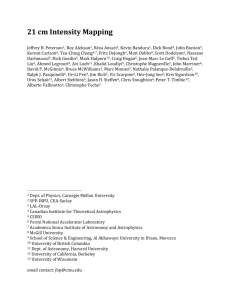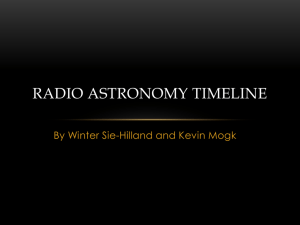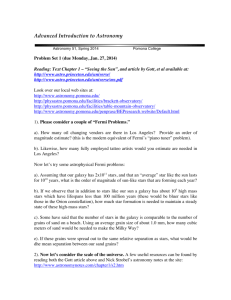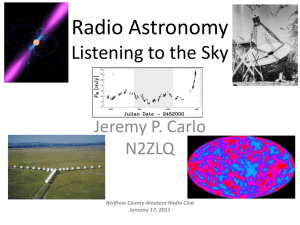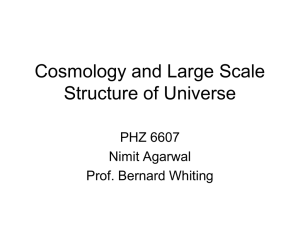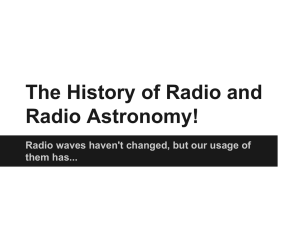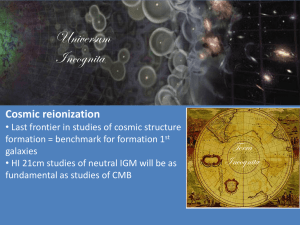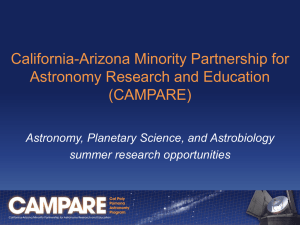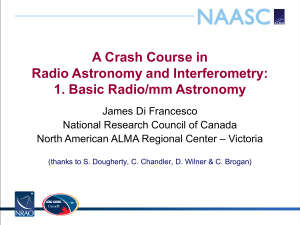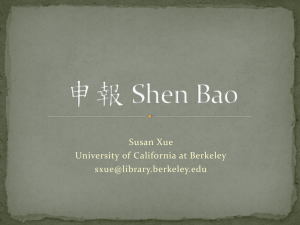Fleiner30Pop
advertisement
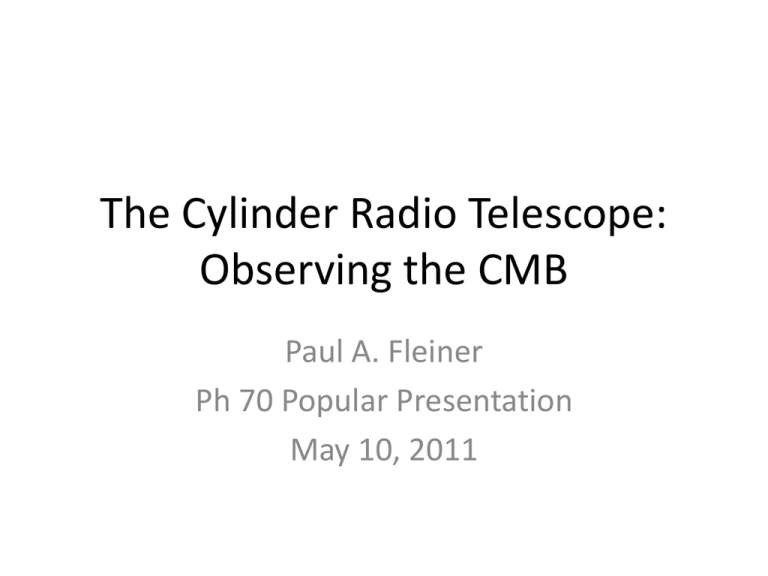
The Cylinder Radio Telescope: Observing the CMB Paul A. Fleiner Ph 70 Popular Presentation May 10, 2011 Outline • Radio Astronomy • 21cm Baryon Acoustic Oscillations (BAOs) • Cylinder Telescope – Prototype – Possible Sites – Challenges • Looking Ahead Radio Astronomy: The Beginning • Early Attempts – Nikola Tesla, Oliver Lodge – Attempted to observe radio emissions from the sun – Unsuccessful • Technical Limits Radio Astronomy • First RA observations – Karl Jansky, 1930s – Bell Labs Jansky’s Discovery • Investigating source of interference in short-wave transAtlantic transmissions • Initially thought source was solar – Happened every 23 hours, 56 minutes • Actually Milky Way Modern Radio Telescopes • Very Large Array (VLA) – New Mexico, 1980 – $78.5m, ~$10,000/m2 • Square Kilometer Array (SKA) – Australia, 2024 – >$2b, $1,000/m2 (Target) How do they work? What We “See” • Hydrogen atom moving away from us is redshifted: – f=700MHz – λ=42cm • Hydrogen atom at rest: – F=1420MHz – λ=21cm Baryon Acoustic Oscillation (BAO) • Method of tracking expansion of universe • About 400,000 years after Big Bang – Universe expanded, temperature cooled – Electrons and protons combine to form H • Photons no longer Thompson scattered • Observing these photons gives us a “ruler” for measuring expansion BAO • Can use the ruler to plot the redshift – Can create a 3D mapping of the universe through time – Measure the expansion – Will help us quantify “dark energy” Cylinder Radio Telescope • Popular from 1960-1980 • Abandoned in favor of devices with cryogenically cooled pre-amps • Illinois 400 ft Telescope, circa 1960 CRT Enabling Technology • Low Noise Amplifiers (LNAs) are much cheaper • T<<300K • Increased capabilities of Analog to Digital Converters (ADCs) • Better Digital Signal Processing • GPUs, FPGAs • More sophisticated FFTs (N log N) • High speed, low power, low cost • Reduces the cost to ~$100/m2 CRT Design • Parabolic half-cylinders • Focuses radio waves radially inward – Strikes axial array of antennas • Key Requirements – High Resolution • Overall array size, time observed – Large Sky Coverage • Number of channels – Large Redshift Range • Bandwidth CMU Prototype • Built by Prof. Peterson’s group in Pittsburgh Goal Design • Array of 10 cylinders – 10m wide, 100m long • Coverage – 20,000 sq. degrees • Frequency Range – 300-1500MHz • Bandwidth – >200MHz Challenges • Synchrotron frequency, free-free emission – Total 21cm signal is ~300µK – 21cm BAO signal is only ~300nK • Instrument Calibration • Environment Calibration – RF Interference • Far from power lines, most electronics Possible Sites • Several in Morocco Moving Forward • Model removal of foreground noise • Build 2 to 3 cylinders – 10m wide, 50m long • Set up larger prototypes in less noisy place • Actually remove noise Acknowledgements • Professor Jeff Peterson, CMU • Kevin Bandura, PhD Candidate • Bruce Taylor, Communication and Facilities Consultant
